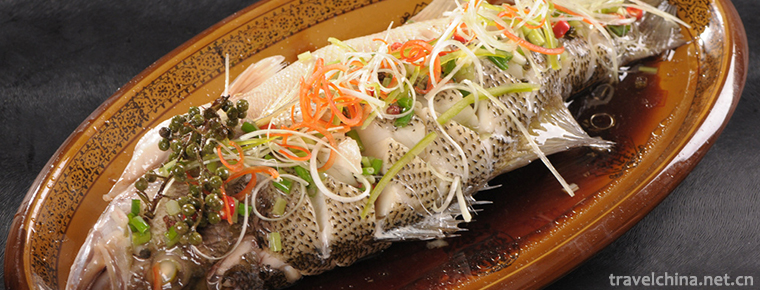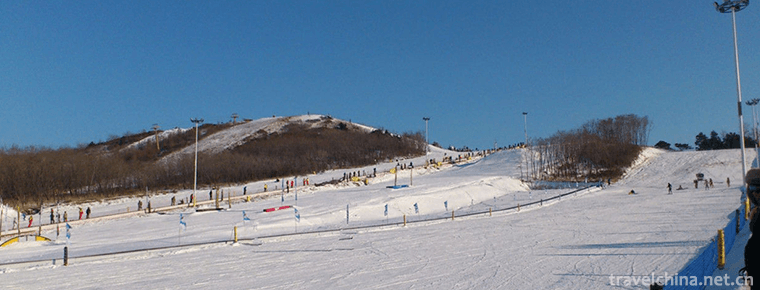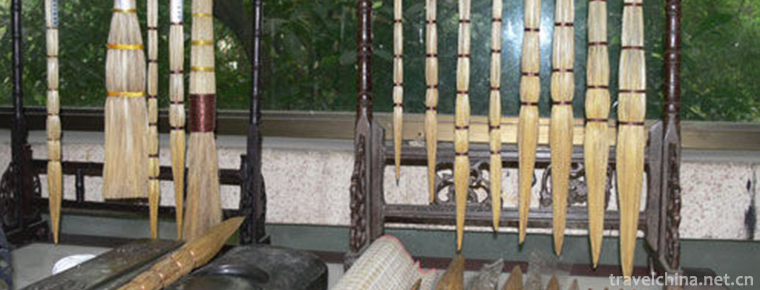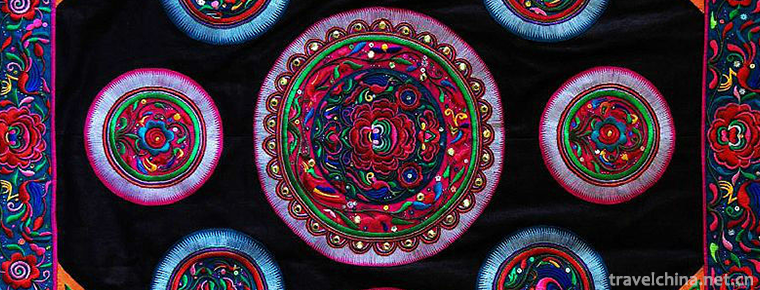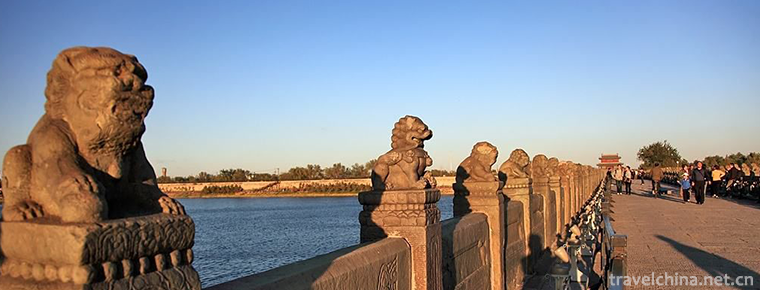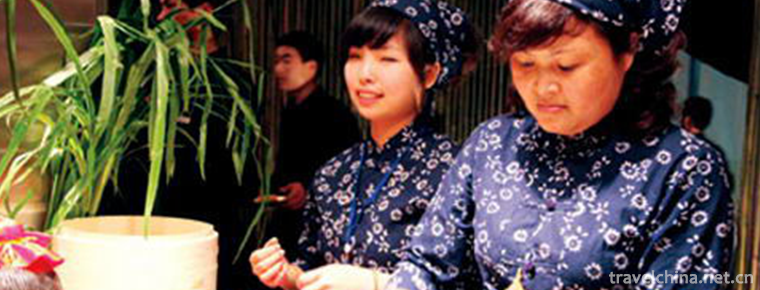Wulingyuan
Wulingyuan
Wulingyuan Scenic Spot is located in the northwest of Hunan Province, central China. Its longitude is 110 20'30 ~110 41'15 and latitude is 29 16'25 ~29 24'25. It is composed of Zhangjiajie National Forest Park in Zhangjiajie City, Suoxiyu Nature Reserve in Cili County and Tianzishan Nature Reserve in Sangzhi County. It covers 369 square kilometers and has more than 3000 strange peaks, of which 243 are above 1000 meters above sea level.
Wulingyuan is located at the junction of quartz sandstone and limestone. The large limestone karst landform in the northern part of the scenic area has been eroded and dissolved by rivers for hundreds of millions of years, forming numerous karst caves, falling water caves, skylights and springs. The forest coverage of Wulingyuan Scenic Spot is 67%. There are more than 400 species of wild animals and 850 species of woody plants, including three species of leopard, clouded leopard and yellow-bellied pheasant, and 25 species of giant salamander, rhesus monkey and pangolin. There are five national first-level protected plants, including Davidia involucrata, Bole tree and Taxus chinensis, and 16 secondary protected plants, such as Taxus chinensis, Eucommia ulmoides and Magnolia officinalis.
Wulingyuan is called a natural maze, a geological museum, a kingdom of forests, a hundred gardens of plants and a paradise for wildlife. In 1992, it was listed in World Natural Heritage . In 2004, it was listed as the first batch of national "World Geopark" and in 2007, it was awarded the first batch of national AAAAA-level tourist attractions.
Historical evolution
In 1984, when Hu Yaobang, then general secretary of the CPC Central Committee, visited the area, he named the three scenic spots of Zhangjiajie, Suoxiyu and Tianzishan as "Wulingyuan" .
In August 1988, Wulingyuan Scenic Area was listed in the second batch of national key scenic spots.
In 1992, Wulingyuan Natural Scenic Spot, composed of Zhangjiajie National Forest Park and other three major scenic spots, was listed in the World Natural Heritage List by UNESCO.
In March 1995, Comrade Jiang Zemin inspected Zhangjiajie with his own inscription: "To build Zhangjiajie into a well-known tourist attraction at home and abroad".
In February 2004, Wulingyuan Scenic Area was listed as the first batch of world geological parks in China.
In 2007, it was listed in the first batch of national AAAAA tourist attractions in China.
Location context
Wulingyuan Scenic Spot is located in the northwest of Hunan Province, central China. It is located between 110 20'30 ~110 41'15, 29 16'25 ~29 24'25. It is composed of Zhangjiajie Forest Park in Zhangjiajie City, Suoxiyu Nature Reserve in Ci The total area is about 500 square kilometers.
geographical environment
Geological characteristics
Wulingyuan area is located in the third uplift zone of Xinhua Xia in the regional tectonic system. During the geological history period, Wuling-Xuefeng, Indosinian, Yanshan, Himalayan and neotectonic movements were roughly experienced. The Wuling-Xuefeng movement laid the foundation structure of Wulingyuan area. Indosinian movement shaped the basic tectonic and geomorphological framework of Wulingyuan area, and Himalayan and neotectonic movements are one of the most basic internal factors for the formation of Wulingyuan's peculiar quartz sandstone peak forest landscape.
The strata that constitute the sandstone peak forest landform are mainly composed of Yuntaiguan Formation and Huangjiadun Formation of Middle and Upper Devonian in the Paleozoic. The strata show the characteristics of littoral clastic rocks. The rocks are pure, thick, flat bottom and well developed vertical joints. Rocks appear in syncline outline, reflecting the special geological structure environment and basic conditions for the formation of sandstone peak forest landform landscape. Runoff erosion and gravity collapse, biochemical and physical weathering effects of external geological activities are indispensable external conditions for shaping Wulingyuan landform landscape.
Geomorphological types
Zhangjiajie landform
Zhangjiajie geomorphology is a unique type of sandstone geomorphology. It is composed of quartz sandstone as the parent rock of landscaping. It is a landscaping landscape with straight edges and high stone pillar forests formed by flow erosion, gravity collapse, weathering and other forces. In the tectonic setting of the South China Plate and the humid sub-tropical zone, it is composed of middle and upper Devonian quartz sandstone with near-horizontal occurrence as the scenic parent rock, formed by flow erosion, gravity collapse, weathering and other forces, dominated by tall columnar forests with straight edges, as well as geomorphic landscapes represented by deep cut valleys, stone walls, Tianshengqiao, Fangshan and platforms.
- Quartz sandstone
Under the action of various external forces such as intermittent uplift and tilt of regional neotectonic movement, flow erosion and cutting, gravity, physical weathering, biochemistry and root splitting, the mountain body forms peak forest according to complex natural evolution process, showing the characteristics of high, flat and steep wall.
- Structural dissolution landforms
Wulingyuan tectonic dissolution landform, mainly exposed in the Permian and Triassic carbonate distribution area, covers an area of 30.6 square kilometers, can be divided into five sub-categories, can be called "western Hunan type" karst landscape typical representative. The main forms are karst lines, karst marks, karst funnels, karst ditches, stone buds, stone forests, holes, depressions, falling water caves, shafts, skylights, undercurrent, underground rivers, karst springs, karst caves, karst troughs, stone films, buried stone buds, funnels, etc. The karst caves are mainly concentrated in the north of Suoxiyu Valley and the south of Tianzi Shandong, with a total number of dozens. Huanglong Cave is the most typical cave, known as the "treasure house of cave science", which has special value in cave Science in terms of tourism and exploration.
- Denudation tectonic landforms
Denudation tectonic landforms are distributed in the Silurian detrital areas, and can be found in the Sanya category: single-sided mountain landforms in clastic rocks, in the horseneck boundary to Baihutang and Chaotianguan to Dajian area around the quartz sandstone peak forest landscape; Zhongshan landforms in Carp Ridge V valley, in Lake flat, Shijiayu, Huangjiaping and other areas; low mountain landforms in clastic rocks, distributed in the outer margin of mid mountains, with gentle slopes and open valleys. Broad V type.
Valley topography
The Valley landform types can be divided into fore-mountain flood fan, terrace and high floodplain. The former distributes in Shaping village and develops in the area of Jiaqiyu-Shijiayukou; two terraces are developed on both sides of Suoxi River, two terraces are base terraces, which are 3-10 meters higher than the river surface; and the high floodplains on Jundiping-Yujiazui line are developed with an area of 4-5 square kilometers.
- Geological Heritage Landscape
Sand lines and ripples on Devonian rock paintings on the echo wall of Wulingyuan Scenic Spot are rare geological relics, which can not only be visited, but also provide evidence for studying paleoenvironment and land-sea changes. Coral fossils distributed in the Permian strata of Tianzishan Mountains resemble tortoise-back patterns, so they are called tortoise-back fossils.
Climatic landscape
Cloud and mist are the most common meteorological wonders in Wulingyuan Scenic Spot. They are five forms: cloud and mist, cloud sea, cloud wave, cloud waterfall and cloud.
Climatic characteristics
Wulingyuan Scenic Spot is a prototype monsoon humid climate in the middle subtropical mountains. The average annual precipitation in the territory is 1380.0-1450.0 mm. The monthly precipitation distribution is uneven, concentrated in April to July. The precipitation days reach 49 days, accounting for about 32% of the annual precipitation days. The concentrated period of heavy precipitation is from May to July. The precipitation amounts to 650 mm, accounting for 46% of the total annual precipitation. From December to January, there was little precipitation, about 56 mm, accounting for only 4% of the total annual precipitation. In a year, April to July is the relative wet season, and August to September is the relative dry season. The average annual sunshine was 1297.2 hours. August was the most, with an average sunshine of 202.5 hours; February was the least, with an average of 55.7 hours. The average annual wind power is 1.1 m/s, which is larger from February to April, ranging from 1.3 to 1.5 m/s, and from 1.0 to 1.2 m/s in other months.
Snowfall in Wulingyuan Scenic Area mainly occurred from December to February next year. The average frost-free period is 91 days in 30 years, of which 24.5 days are frost-free days and 274 days are frost-free days. Frost begins in November and ends in March. January was the most, with an average of 9.8 days, followed by December and February, with 7.2 days and 5.3 days, respectively. The annual average rainy day is 1.3 days, the longest continuous time is 8 days, and the maximum ice diameter is 9 mm (February 16, 1964), mostly in December.
Scenic spot
Main scenic spots
zhangjiajie national forest park
Zhangjiajie, also known as Qingyan Mountain, covers an area of 130 square kilometers. It is the first National Forest Park in China. It is located in Wuling Mountain. Zhangjiajie has a peculiar landform with more than 2000 stone peaks in different shapes, lush trees and 88% forest coverage. Huangshizhai, Shadaogou, Golden Whiplash and Golden Whiplash Creek are the most famous. There are seven main tourist routes: Huangshizhai, Jinwhip River, Yaozi Village, Pipa River, Shadaogou, Chaotian View and Backyard Garden.
Tianzishan Scenic Area
Tianzishan Scenic Spot is located in the north of Wulingyuan, which is related to Zhangjiajie and Suoxiyu mountains and rivers.
Yangjiajie Scenic Area
In 1992, a new scenic spot, Yangjiajie, was discovered in the northwest corner of Zhangjiajie. This new scenic spot covers a total area of 3,400 hectares.
Suoxi Valley scenic area
There are more than 2000 peaks, 19 gullies and 6 streams in the natural scenic area of Suoxiyu. The main attractions are Shili Gallery, Yuanyuan Waterfall, Nantianmen, Huanglongdong, etc.
Other attractions
Southern sky column
Southern sky is a pillar, 300 meters high, one holds the clouds, the other holds the earth firmly, upright and solid, such as Optimus pillar stone. Nantianzhu is located in Zhangjiajie National Forest Park, along the Huangshizhai Tourist Line. Through the South Tianmen Gate, a stone peak rises up and down from an unfathomable valley, as thick as a guard of the town. Shreddy and unrestrained, extraordinary and free from vulgarity. There are many weird rocks in Wulingyuan, which is a typical example. When weathering causes rock to break down, fragmentation, and water erosion causes it to collapse along the crack surface, it forms isolated stone pillars rising from the ground.
Pipa Stream
Biwaxi is another wonderful scenic spot of Zhangjiajie National Forest Park with its lush forests and rugged rocky peaks. The main scenic spots are Jiuzhong Xiange Pavilion, Wanglangfeng, Husband and wife Rock, Chaotian View, etc.
key stand
Ding Hai Shen Needle is located in the area of Huangshizhai Tourist Line. Five peaks, seats like needles in the ground. Legend has it that the monkey king brothers, the monkey king, borrowed five embroidery needles from the Dragon King of the East China Sea to become five peaks and entered the earth three thousand feet in order to keep Baoshan from falling.
Footbridge
The remaining piers of overpass are six round stone pillars over 200 meters high, located in the valley and stream west of Huangshizhai, 300 meters apart from each other, arranged one by one, rising from the first stone pillar and decreasing from the fourth stone pillar one by one, forming an arched arc, which is very similar to a group of piers.
Turtle turtle
On the platform at the top of the stone peak, an oval rock about 5 meters long, 1 meter wide and 2 meters high rises slightly, much like a tortoise.
Tourism Information
Tourist routes
Zhangjiajie National Forest Park Huangshizhai Jinwhip Stream Bailong Tianti Yuan Jiajie Oolong Zhai Tianbo Fu Laowang Tianzishan Helong Park Shili Gallery
Traffic routes
aircraft
The nearest airport of Wulingyuan Scenic Area is Zhangjiajie Lotus Airport, which has a bus to the city, about 5 kilometers.
Train
Zhangjiajie Railway Station can be reached by train. At the South Railway Station, there is a bus to the scenic spot for about 40 minutes.
automobile
You can go to Changsha by bus, and then you can transfer to Zhangjiajie at Changsha West Station and East Station. You can also go directly to Zhangjiajie Central Bus Station and take a bus to the scenic spot after the war.
Self-driving
Self-driving is not allowed to enter the scenic area, but it is necessary to transfer into the scenic area by environmental protection vehicle. It usually stops outside the ticket station of Zhangjiajie Forest Park or Wulingyuan.
Favoured policy
1. Implementing price charges in off-peak season, the peak season is from March to November each year, and the off-season is from December to February next year. Among them, ordinary tickets in peak season are reduced to 225 yuan per person (245 yuan in original peak season), and ordinary tickets in off-season are reduced to 115 yuan per person (136 yuan in original off-season). Tickets are valid for four consecutive days.
2. The annual ticket price of Wulingyuan core scenic spot (including environmental protection bus ticket) is 298 yuan per person. Tourists can enter the scenic spot unlimited times within one year after purchasing tickets.
3. Tourists who buy tickets by travel agencies or online in advance are offered preferential prices in scenic spots: ordinary tickets in peak season are 182 yuan per person, and ordinary tickets in off season are 91 yuan per person.
4. Children under 6 years old (excluding 6 years old) or under 1.3 meters tall (including 1.3 meters), elderly people over 70 years old and disabled persons are exempted from tickets with valid certificates; minors aged 6 years (including 6 years old) - 18 years old (excluding 18 years old), students with full-time undergraduate and below education, students aged 60 years (including 60 years old) to 70 years old (excluding 70 years old). Half-ticket discount is offered to the elderly on the basis of valid certificates. Adolescents from Hong Kong, Macao, Taiwan and other inbound tourists shall enjoy the same discount in ticket prices with valid identity certificates such as Hong Kong and Macao Residents'Pass to the Mainland, Taiwan Residents' Pass to the Mainland or Student's Documents. Active servicemen and retired military cadres shall enjoy a half-vote discount on the basis of valid certificates. Transportation vehicle prices in scenic spots are half-price preferential for the above-mentioned tickets.
Pictures From: http://bbs.fengniao.com/forum/10515004.html











-
Steamed perch with scallion and black beans
Steamed bass cooking techniques are mainly steamed dishes, and their taste is salty and fresh. Steamed perch is one of the famous traditional dishes in Guangdong province.
Views: 177 Time 2018-11-02 -
Shenyang Weipo Skiing Ground
Shenyang Qiaopo International Skiing Resort is located in AAAA Scenic Area of Qiaopo in Shenyang, which is surrounded by mountains in the northeast direction and boundless forest sea..
Views: 224 Time 2019-02-08 -
Dragon Pen Making Skills of White Shamao
The craftsmanship of the Dragon pen of Baishamao was originated by Chen Baisha, a famous calligrapher. It has a history of more than 500 years. Made of Maotao, a special product of Guifeng Mountain.
Views: 281 Time 2019-04-03 -
Dong embroidery
Dong embroidery is an important branch of Chinese minority embroidery, which uses a needle to puncture and attaches various colored silk or cotton threads to the surface of the fabric to form various .
Views: 117 Time 2019-04-27 -
Dark pass
Dark pass Dark Biography, as the first Creation Epic of the Han nationality, is represented by folk songs and songs. It began to circulate in the Ming and Qing Dynasties. .
Views: 316 Time 2019-05-03 -
Legend of Lugou Bridge
The legend of Lugou Bridge is very rich in content, including the construction of Lugou Bridge, the lion on Lugou Bridge, Lugou pier chopping dragon and sword, Lugou Xiaoyue, Lugou Bridge and Wanping .
Views: 365 Time 2019-05-15 -
Mongolian camel raising custom
The Mongolian camel-raising custom has a long history. In the practice of production and life with a long history, camel has become the most loyal partner of mankind while making outstanding.
Views: 83 Time 2019-06-04 -
Production Techniques of Wufangzhai Zongzi
The traditional production techniques of Wufangzhai zongzi are mainly divided into 36 processes, such as material selection, rice dipping, leaf boiling, stuffing, shelling, wrapping, thread binding an.
Views: 214 Time 2019-06-29 -
Neijiang in the period of the Republic of China
The 1911 Revolution ended the rule of Qing Dynasty in Neijiang City. In the 24th year of the Republic of China (1935), Sichuan government was unified, and the districts, cities and counties of Neijiang City were divided into the second (Zizhong, Neijiang, Ziyang, Jianyang,.
Views: 336 Time 2020-12-16 -
Nanchong scenic spot
The national 5A tourist attraction is located in Ma'an Town, Yilong County, with a total planning area of 52.5 square kilometers. The core scenic area with the former residence of Zhu De, the birthplace of Zhu De and the memorial hall of former residence of Comrade .
Views: 318 Time 2020-12-17 -
Yibin cultural undertakings
By the end of 2019, there are 7 art performance groups, 2 art performance venues, 11 cultural centers, 186 cultural stations and 10 public libraries in Yibin cultural system. There are 1 provincial science and technology tourism demonstration base, 2 prov.
Views: 159 Time 2020-12-18 -
Guangan transportation
Located at the junction of Sichuan and Chongqing, Guang'an is an important passage from east Sichuan to Chongqing and southward and eastward. It is also an important node on the national "five vertical and seven horizontal" traffic trunk line.
Views: 339 Time 2020-12-19
